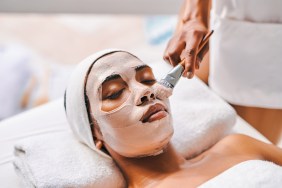
The use of stem cells have been making headlines for years, but now they’re getting even more attention as they’ve started to be embraced by the beauty industry. We spoke with Linda Nelson, from Lifeline Stem Cell Skin Care, to find out more about stem cell beauty innovations and how they can help achieve younger looking skin. Here are six things we learned.
-
The vast majority of skincare products that make stem cell claims are based on plant stem cells — fruits, herbs or plants. In humans, stem cells are the body’s repair system. At birth, our bodies have an abundant supply of stem cells. With age, stress and poor diet choices, the number and vitality of stem cells decrease dramatically. This is why using human stem cell ingredients topically supports the health and healing of the skin. Unlike human non-embryonic stem cells, however, the benefits of plant stem cells stop at the plant.
-
Lifeline Skin Care uses unfertilized human eggs to produce pluripotent, non-embryonic stem cells. The content of these stem cells is rich in potent growth factors and proteins and can aid the skin in cell proliferation and collagen synthesis.
-
The growth factors found in stem cells provide the messaging molecules necessary to trigger collagen and elastin production, therefore providing the basis for healthier and younger looking skin.
-
The skin surrounding the eyes is the thinnest skin on the body; because it’s so fragile and weak it’s also the first area to reveal fine lines and wrinkles. With age, the skin around the eyes becomes even thinner. The human stem cell extracts help increase skin thickness in the eye area and make it less vulnerable to premature aging. The natural proteins, peptides and growth factors help stimulate collagen production to firm and tighten skin around the eyes.
-
Growing cells in the laboratory is known as cell culture. Human parthenogenetic stem cells are created by stimulating the unfertilized eggs with a mixture of chemicals which mimics the role of the sperm, but without introducing any male chromosomes. The activated cells cannot form an embryo, but do start to divide and are transferred to a petri dish that contains a special mixture of nutrients which further supports the cell division in this unspecialized state. The stem cells begin to divide and spread over the surface of the dish. As the stem cells divide and multiply enough to crowd the dish, they are removed and plated into several fresh culture dishes.
- If skin is damaged from UV exposure, the skin cell itself will try to repair the damage. If the damage cannot be repaired by the cell, it will die. Stem cells are the repair system for the body; they sit back and wait for the need to replace the cell, if the cell cannot repair itself. In this way, the stem cell recognizes the need for damage repair and replaces the damaged cell with a healthy new one.
Are you convinced? Will you be giving stem cell skincare a try?






